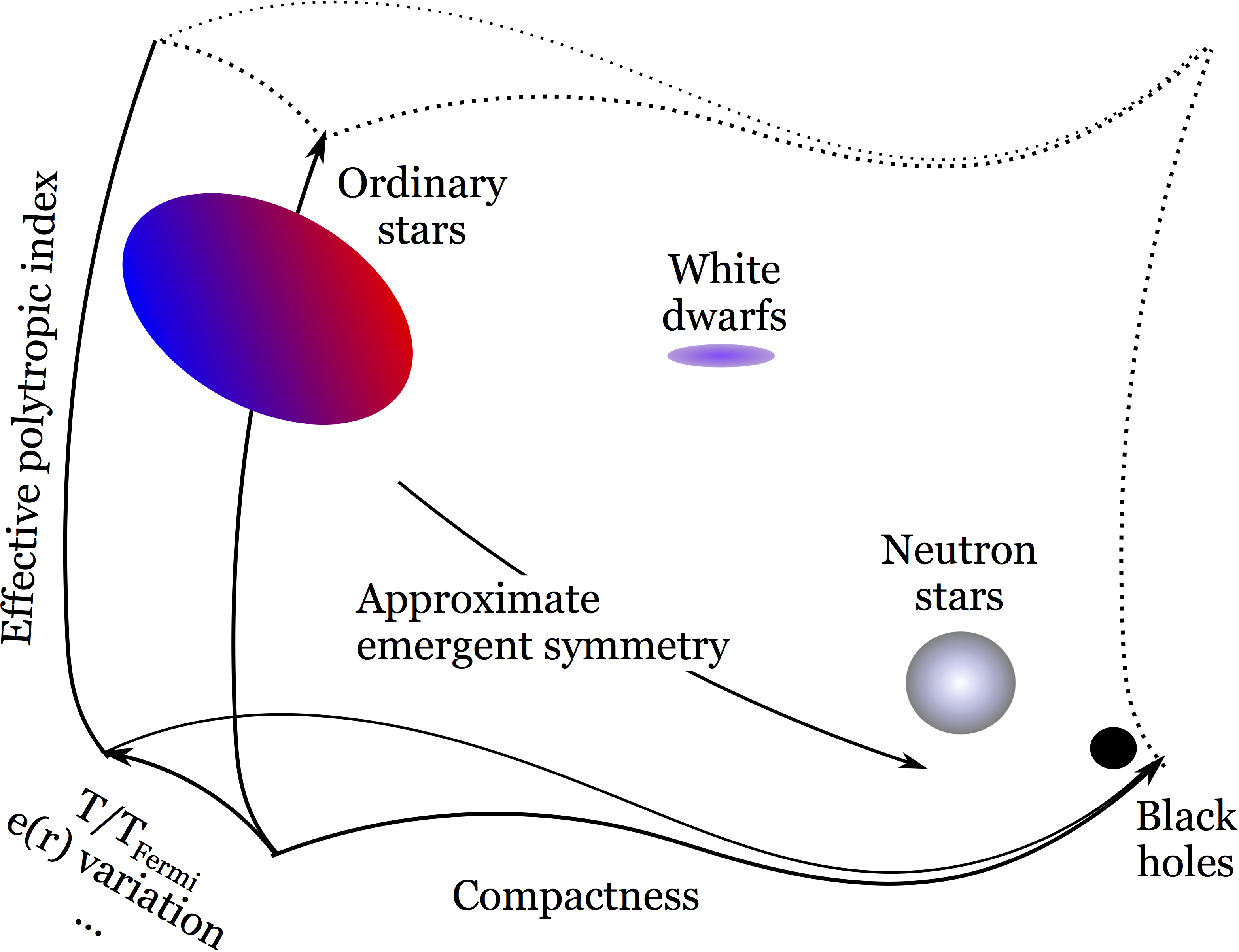Why I-Love-Q: Explaining why universality emerges in compact objects
Kent Yagi, Leo C. Stein, George Pappas, Nicolas Yunes, Theocharis A. Apostolatos
Phys. Rev. D 90, 063010 (2014) [arXiv:1406.7587] [doi:10.1103/PhysRevD.90.063010]
Black holes are said to have no hair because all of their multipole moments can be expressed in terms of just their mass, charge and spin angular momentum. The recent discovery of approximately equation-of-state-independent relations among certain multipole moments in neutron stars suggests that they are also approximately bald. We here explore the yet unknown origin for this universality. First, we investigate which region of the neutron star’s interior and of the equation of state is most responsible for the universality. We find that the universal relation between the moment of inertia and the quadrupole moment is dominated by the star’s outer-core, a shell of width (50-95)% of the total radius, which corresponds to the density range ()g/cm. Second, we study the impact on the universality of approximating stellar isodensity contours as self-similar ellipsoids. An analytical calculation in the Newtonian limit reveals that the shape of the ellipsoids does not affect the universal relations, but relaxing the self-similarity assumption can completely destroy it. Third, we investigate the eccentricity profiles of rotating relativistic stars and find that the ellipticity is roughly constant, with variations of roughly (20-30)% in the region that matters to the universal relations. Fourth, we repeat the above analysis for non-compact, regular stars and find that the ellipticity is not constant, with variations that easily exceed 100% and universality is lost. These findings suggest that universality arises as an emergent approximate symmetry: as one flows in the stellar-structure phase space from non-compact star region to the relativistic star region, the eccentricity variation inside stars decreases, leading to approximate self-similarity in their isodensity contours, which then leads to the universal behavior observed in their exterior multipole moments.
